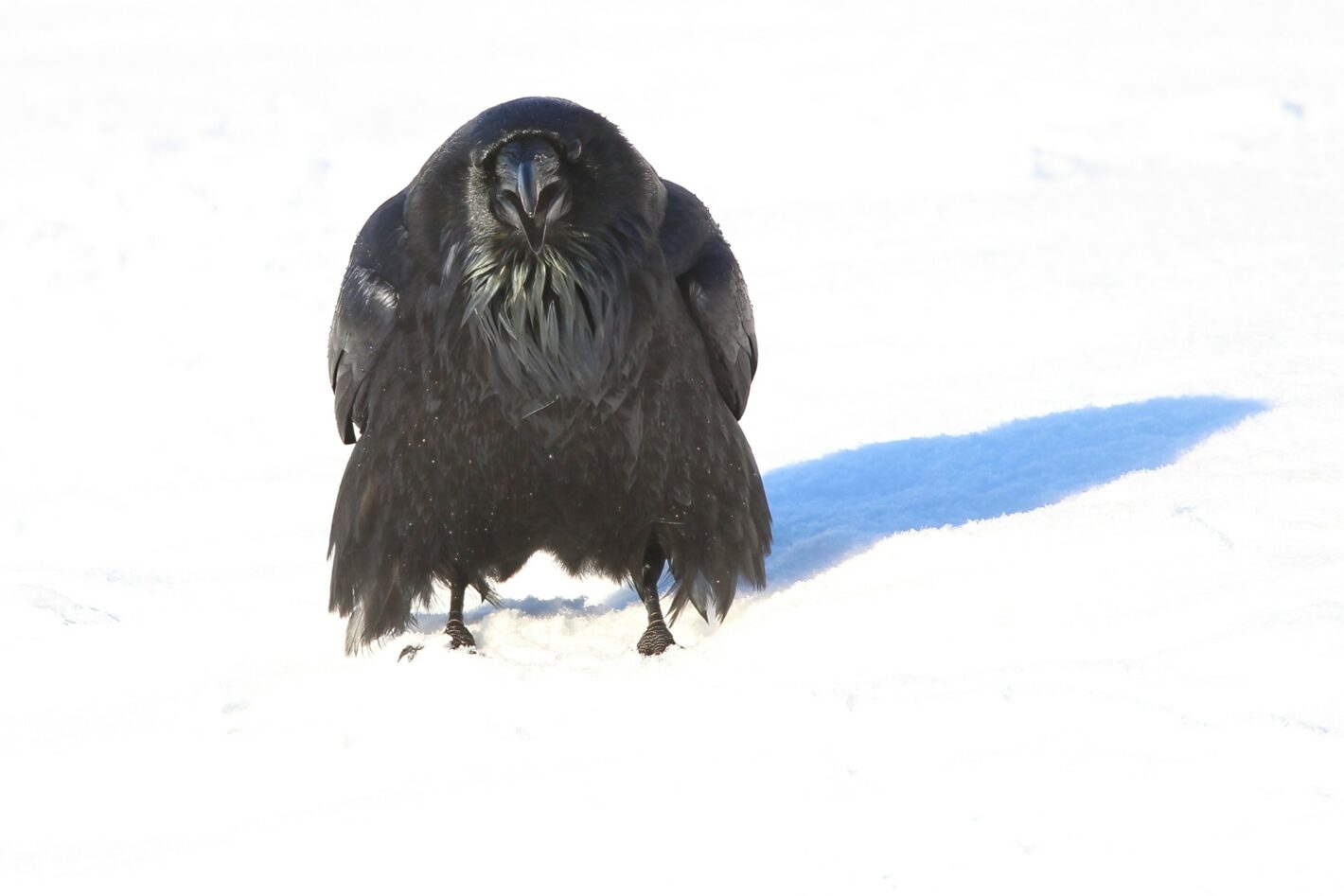As the days of early December seem to fly by, the nights are long and thankfully not filled with terror. In the past number of weeks Corvus corax has returned in noticeable numbers to the area. Entirely black in hue like the American Crow, the Common Raven is about half again as large as a crow. A thick neck, sporting a ruff of feathers around the throat, called ‘hackles”, paired with a wide, dagger-like beak, added to a wedge-shaped tail in flight displaying the longer feathers mid-tail and weighing two kilograms at maturity, makes the raven hard to miss. The clearly audible croak of the raven, distinctive from the higher pitched caw of the crow, helps the birder identify Edgar Allen Poe’s mournful source of “nevermore”.
Walking in the warming sunshine along the eastern section of Elliston Park, we spotted a lone raven landing along the water’s edge. With the sun directly south, an opportunity to watch, study and photograph this most intelligent member of the Corvidae family which was wandering with purpose on the north side of the pond. Deliberately wading into the water, a splash bath was in order, followed by a cleaning of its beak in the snow. This magnificent raven sat quietly in the snow for a few moments before deciding to take flight, landing near a flock of magpies who had been taking splash baths as well.
The most widely geographically spread member of the Corvid family, often sedentary, is highly adaptable both to climate and to food sources. An omnivore, a raven’s diet can include adult and nesting birds, eggs, small mammals, carrion in the form of large mammals, amphibians, reptiles, fish, invertebrates and if needed, plant matter. When “roadkills” are found, it is not uncommon for several ravens to gather, joining wolves, coyotes and even eagles in a free meal. Ravens will also consume human foods and frequent garbage dumps to find calories.
Highly regarded for its intelligence, the raven is known to use tools to obtain food. Its brain-to-body weight ratio is among the largest in all bird species, equal to that of great apes and only slightly lower than a human.
Reaching the age of three, a raven will find a mate for life. Courtship behaviours include in-flight acrobatics, perching together, touching bills and preening each other’s feathers. Building a nest together, a clutch of raven eggs numbers from four to seven with both parents working together to feed the newborn. Approximately six weeks after hatching, the juvenile ravens will join other juveniles, forming bands of youthful ravens.
Living to over twenty years in the wild, the Common Raven has been highly revered in Canada’s indigenous cultures, found in myth, legends, art and tradition. Viewed as a messenger, trickster, a healer, a guardian spirit and teacher, the raven symbolizes knowledge, creation and prestige in west coast cultures, often include in totems. Inuit people have viewed the raven as the “Creator of All Life”. Vikings have ravens in Norse mythology with Odin having two ravens to act as his eyes and ears.
Fictional character in the much vaunted series, “Game of Thrones”, Jon Snow, is shown with both ravens and crows in different episodes as are other characters. Without question, the mystical nature of a most intelligent bird, the raven is truly a bird worthy of study and admiration.












